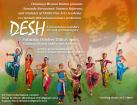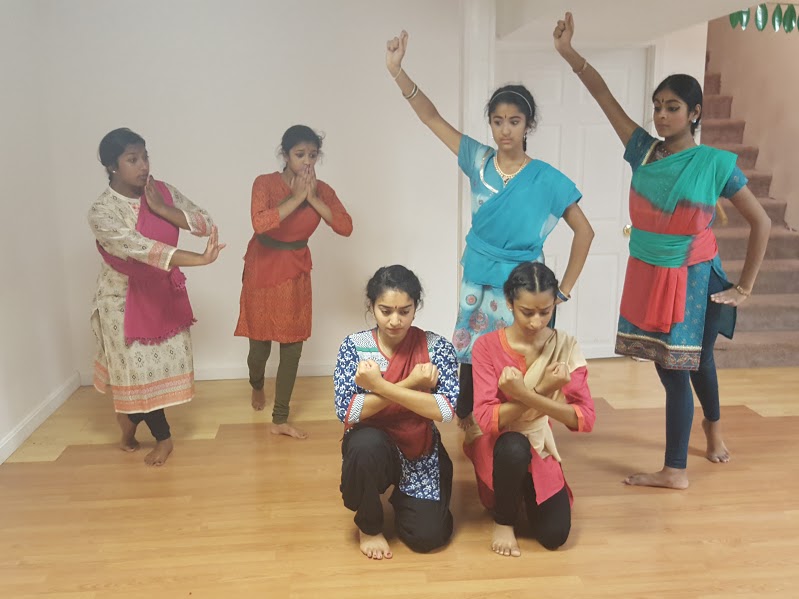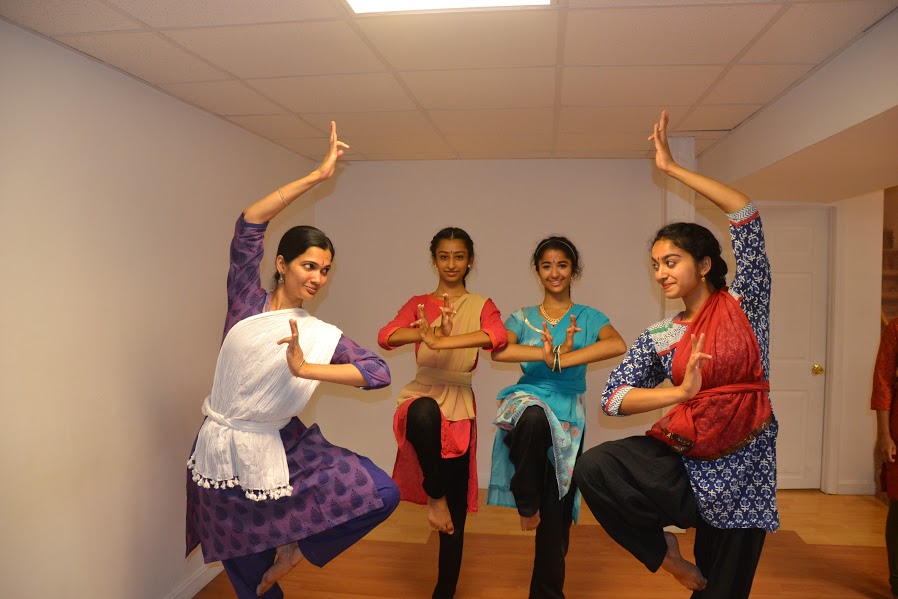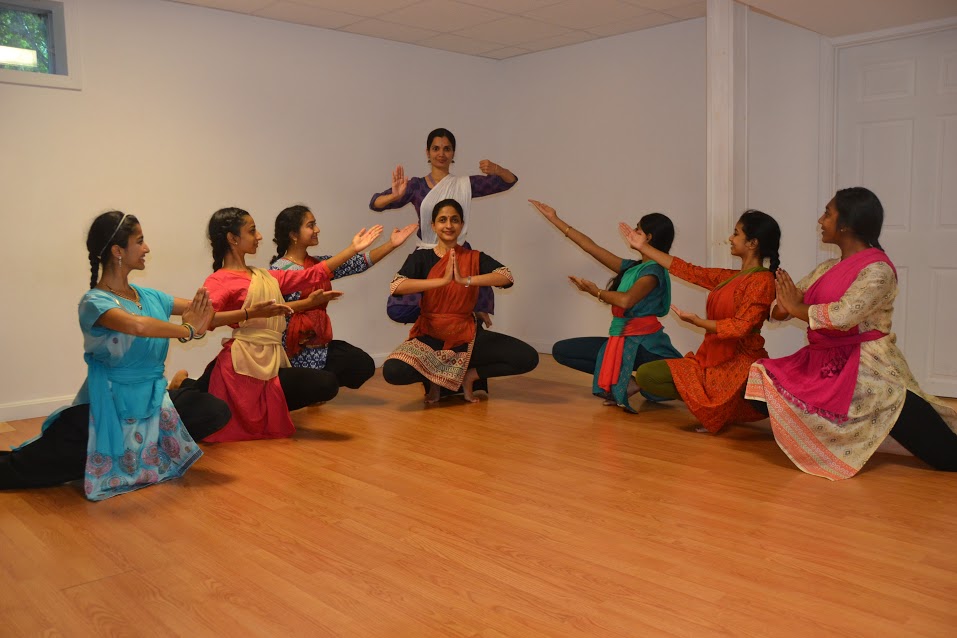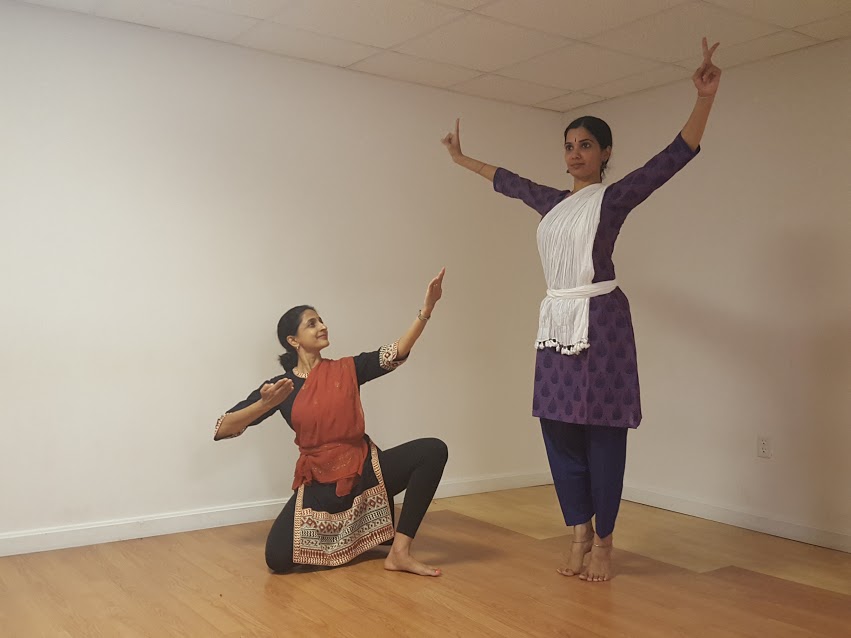Contribute
| Lokvani Talks To Sunanda Narayanan |
Nirmala Garimella
09/21/2016
(This article is sponsored by Immigration Solutions)
Sunanda Narayanan is an acclaimed exponent of the Vazhuvoor tradition of Bharata Natyam and well know in the Boston Area. She had her training under Guru Rhadha, one of the foremost Bharatanatyam teachers and choreographers of today. For over two decades now, Sunanda has been performing solo and duo with her sister, Sumitra, and has given around 250 performances in several Indian cities and in USA, Canada, and Brazil. Sunanda has performed in all the lecture demonstrations presented by her mother, Sujatha Vijayaraghavan, who is a reputed scholar of Indian music and dance. In particular, the presentation on “Environmental Consciousness in Bharatanatyam†received wide media attention in India and was broadcast on the Indian National Network by the University Grants Commission in India. Give us some background on Desh, why and how it was conceived? The inspiration for Desh was the 50th anniversary of Indian Independence in 1997. My sister, Sumitra, and I had a few performance opportunities lined up at Chennai sabhas for the December festival and one of these was at Bharat Kalachar - a sabha affiliated with our alma mater high school, Padma Seshadri Bala Bhavan. Eminent educationist Mrs Y G Parthasarathy who headed the school suggested that we do a special program to commemorate the occasion rather than a dance program in the regular format. This was the impetus for this thematic presentation. Desh has been reframed as a group reproduction? why was that necessary? My mother, Sujatha Vijayaraghavan (a scholar of dance and music from Chennai) always sought to add interesting and novel items to my sister's and my dance repertoire. In our dance teacher - Guru Rhadha, she had a perfect collaborator for the choreography. The songs selected by my mother for Desh were originally visualised for our presentation as a duo. Desh was very well received in India and in the US in 1997-98. Since that time, it has always been my desire to present it again given the evergreen nature of the theme. Soumya and I as dance teachers in the Boston area have often discussed working together even though we come from different dance styles of Bharatanatyam because we share a lot in terms of what we appreciate in music and dance. When we discussed presenting Desh together, we realized that many of the songs in the production have role play opportunities since they dwell on situations and characters who have had a profound and lasting impact on the Indian psyche. Having multiple dancers play these characters rather than having two dancers constantly switch roles creates greater dramatic impact in the retelling of these stories. Even with the pure dance sequences, it is always more interesting to see a group of dancers create arresting formations and visuals on stage than a solo or duo format. This was the main reason to include more dancers in the production. Can you tell us more about what the audience can expect from the performance? Desh is a mostly chronological retelling of stories and leaders who have shaped the spiritual legacy of India. It is planned as a 'Marga Darisanam' - a Viewing of the Path Taken in both its content as well as dance format since the choreography loosely follows the typical Alaripu - Tillana 'path' of a Bharatanatyam recital. Starting from the Upanishads where values are imbibed from Nature, the pieces reflect on the learnings from the epics, Buddha, Shankara, saints like Tyagaraja and Meera, and of course Mahatma Gandhi during the historic non-violent freedom struggle. The influence of each of these leaders is undeniable and permanent. Songs have been sourced from various periods of time, and from multiple regions and languages of India. My mother, who devised the script for this entire program will also serve as the emcee who will introduce each piece. Every dance tells a story? What is the story in this production? The core story of this production is about the values of the Indian ethos and the influences that shaped them. Starting from Damyata (self-control), Datta (sacrifice), and Dayadhvam (compassion) that are learned from the rumbling clouds, to the Bhagavad-Gita, to Ahimsa learned from the Buddha, to the Oneness of all human beings from Shankara, to non-violence from Gandhiji, the program touches quickly on the components of spiritual India - the values that remain eternal in our increasingly turbulent times. Share with us some background on the dancers and the work behind the scenes? As I mentioned, Soumya and I have long wanted to work together and both of us were inspired by the content of this production to revive it again for the Boston audience. In terms of production values, there has definitely been a significant shift in the last two decades since we first performed Desh and it seemed necessary to 'update' the way we presented the songs today. Once we decided to include more dancers, I spoke to my senior students who are committed dancers about their possible participation and what it would involve in terms of rehearsals and logistics. Since the theme is novel, they were intrigued and excited about being involved and the whole team has invested many hours in the rechoreography and coordination of each piece. It was fun to see how I sometimes had requests from students asking to play specific characters - both heroes and villains! Every member of the team has displayed strong commitment and contributed in many ways including FaceBook publicity, brochure design, rehearsal coordination etc. My mother helped with our costumes, my student Anjali Vishwanathan with the evocative flyer design, and last but certainly not the least - all the dance class parents are pitching in for foyer, stage decor, sound and lighting. Music is a big part of any dance? Any notes on the music and the artists behind this? The music of Desh is inspiring to say the least - the familiar lyrics of the poets evoke nostalgia every time we hear them and some moments always move us to tears with the intensity of the message they convey. Some key songs like the varnam on the epics and the tillana on the theme of unity have been penned and composed by my mother in Tamil and Sanskrit respectively. The music is by eminent artists from India including Guru Rhadha on the cymbals and my mother Sujatha Vijayaraghavan as lead vocalist. Thank you for allowing me to share this information on the production and we strive to have a presentation that does justice to the lofty ideals it speaks of.![]()
You may also access this article through our web-site http://www.lokvani.com/
